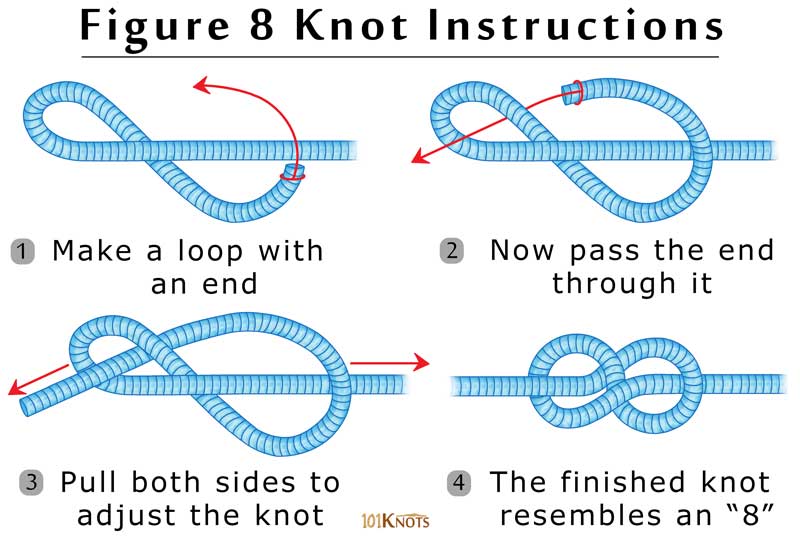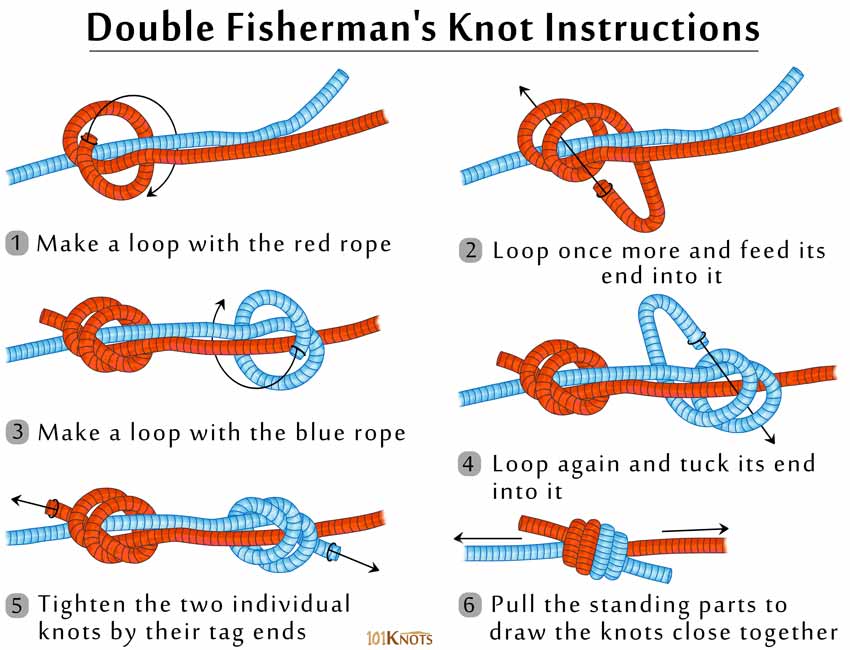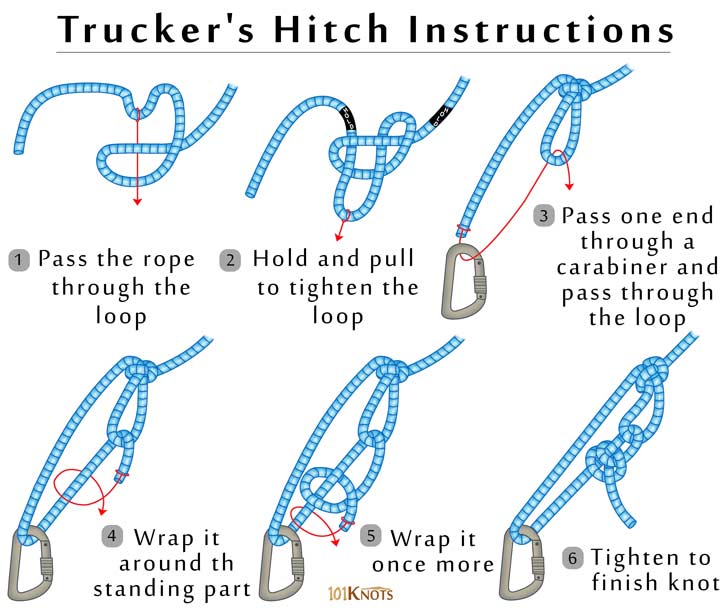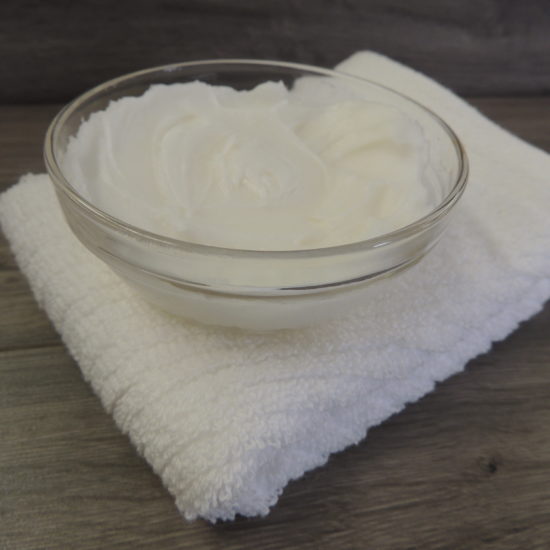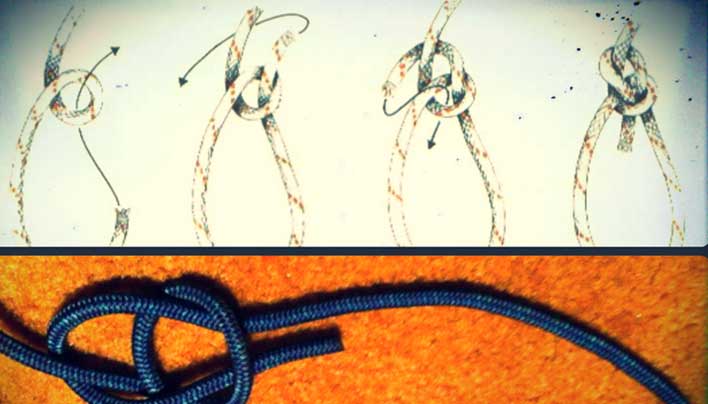
In this article, we are going to take a look at five knots that you should know how to tie at all times. Why learning how to tie a knot you’re maybe wondering. Because they can save your life and these five important knots are a good start. The more of these dependable survival knots you learn, the better off you’ll be under adverse conditions.
If you have to navigate difficult terrain while hauling supplies, some types of knots will help make it easier and safer. If you’re lost, the right knots for fishing and trapping game can keep you from starving.
There’s a reason firefighters and Coast Guard rescue crews learn how to tie survival knots. In a life or death situation, a secure rope can save someone from a burning house or a raging storm.
So now that we know why we should know them, just find the details along with instructional videos below:
Bowline / One-Handed Bowline
A Bowline is one of those knots that’s useful for many applications, putting a loop into a knot that won’t seize upon you, or more importantly a One-Handed Bowline that could save your life one of these days.
It seems like I’m always tying a bowline to secure a line to a fixed point. It’s a great all-around knot and one you should definitely know both on its own and one-handed.
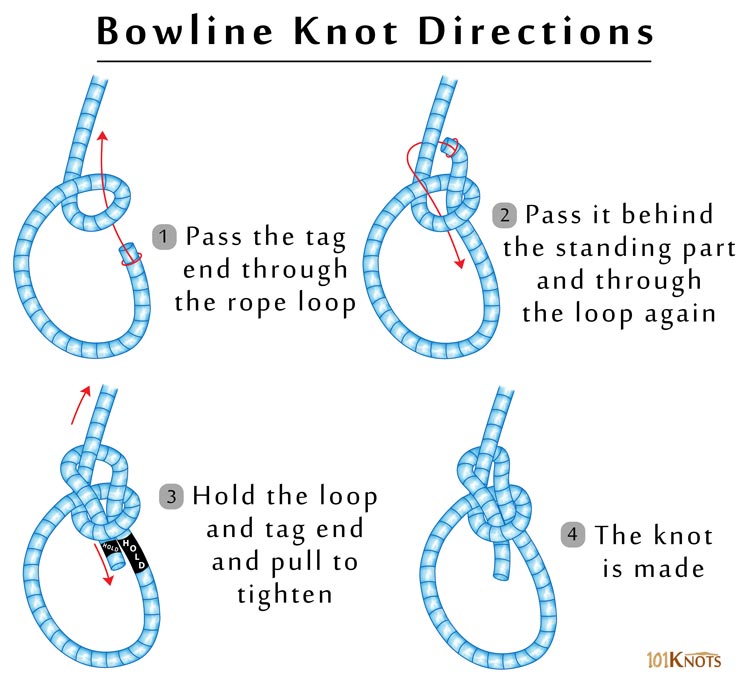
Here you can see how to do a one-handed bowline:
Survival Uses:
You can tie the bowline around things or through them, and tie it around yourself. Being able to tie it with just one hand can be a boon when you need to tie a knot in an emergency. It’s also useful for hanging items from tree limbs, like food and survival gear.
Taut-Line Hitch
I feel like the Taut-Line Hitch is one of the most underrated knots out there, it’s extremely versatile and great for applications where you can have varying tension, such as securing a load. It’s most common application is providing adjustable tension for guy lines on a tent or tarp.
Some interesting sliders and devices now appear on tents’ guy lines to adjust the tension. Call me old fashioned, but I still prefer a Taut-Line Hitch.
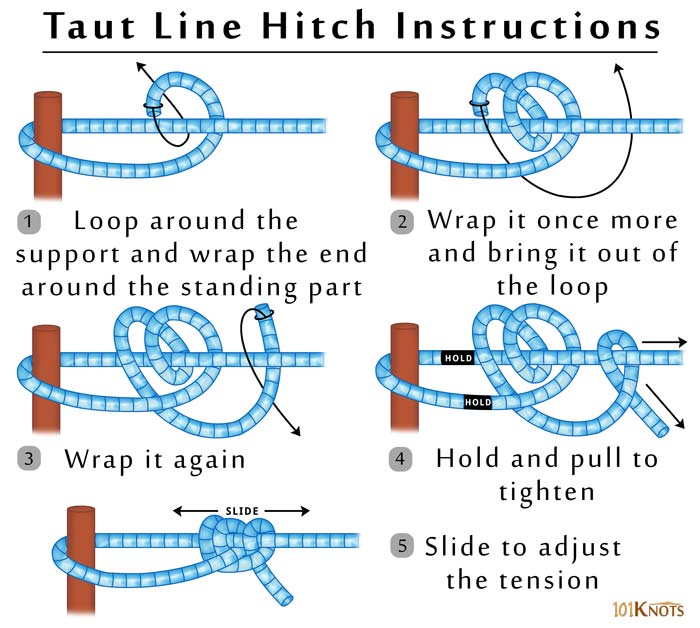
Image credits: https://www.101knots.com/taut-line-hitch.html
Here’s also a video on how to do it.
Survival Uses:
A taut-line hitch is what you use when sheltering under a tarp. Stringing a rope between two trees and laying your tarp over it is the first step in creating a buffer between you and the elements.
Threaded Figure-Eight
Another knot that’s underrated in its ability to get you out of a jam is the Threaded Figure 8.
While the application I’m mentioning almost needs to be paired with a Swiss Seat at the least, nothing beats the Threaded Figure 8 to safely get you down from heights, whether on purpose or in an emergency situation.
The figure-eight knot creates a stopper wherever you need one on a rope, though the steps are also steps you take to create several other knots.
Double Fisherman’s Knot
For joining rope together or making an adjustable loop out of two of these knots, the Double Fisherman’s Knot can’t be beaten. Preferably the rope you’re joining together should be around the same diameter, as there’s better knots to join sections of different diameter rope such as a Beckett’s Bend or as it’s commonly known, a Sheet Bend.
Power Cinch Knot
Another little known and underrated knot is the Power Cinch. Another great way to add tension to a line without the possibility of it slipping loose like I’ve seen Taut-Line Hitches do, yet very easy to pull down in a hurry.
This is what I use for any kind of trunk line while I’m camping or putting up a shelter. Tensioning knots are something you should know and the reason I’ve included two of them in these five. I always see people over-tying objects in the back of a truck or in many situations where all they’re doing is trying to secure a load. Regular half hitches work fine, but that extra effort both in tying and removing all those knots simply isn’t necessary if you know the right knots to use in the first place.
Honorable Mention – Chain Sinnet
One last knot I’d like to mention is the Chain Sinnet, I literally tie this multiple times a week into all my extension cords and I can’t tell you how much time and aggravation it’s saved me over the years.
I was first taught this by an old employer who wanted their extension cords tied this way and I’ve always remembered it because of its efficiency. Mark this down as one to take a look at too if you’ve got the time for a bonus knot.


